Table of Contents
The IBPS RRB PO Mains Exam 2024 was successfully conducted on 29 September 2024 across two shifts. Candidates who appeared for the exam have shared their experiences with us about the type of questions asked, providing a useful resource for those preparing for future exams. Memory-based papers offer a chance to analyze the difficulty level, question patterns, and important topics covered in the actual exam.
In this article, we will provide the downloadable PDFs of the memory-based paper for the IBPS RRB PO Mains 2024. The complete memory-based paper is expected to be available by 04 October 2024. Until then, some key questions from both shifts are provided below.
IBPS RRB PO Mains Memory Based Paper 2024
The IBPS RRB PO Mains is known for its challenging nature, but with the help of memory-based papers, candidates can better prepare for upcoming exams. This resource will be invaluable for those looking to analyze the 2024 Mains exam and enhance their preparation for the upcoming mains examination.
IBPS RRB PO Mains Memory Based Paper 2024 [Download PDF]
All the memory-based questions will be provided above, till then candidates can check a few of the questions below.
Directions (1-3): Study the information carefully and answer the questions given below.
There are ten members in a family – A, B, C, D, E, F, G, H, I and J. H is the grandfather of F who is the sister of I. G is the son-in-law of E. D is the sister of H. J is the mother of F. E is the mother of A. C is the father of B and the brother-in-law of H. E doesn’t have any siblings. A is the sibling of J. E has only one daughter. A and I are not of the same gender.
Q1. How is the brother-in-law of A related to H?
(a) Brother
(b) Son
(c) Uncle
(d) Father
(e) Son-in-law
Q2. If K is the wife of B, then how many female members are there in the family?
(a) Five
(b) Seven
(c) Six
(d) Four
(e) Can’t be determined
Q3. Which of the following statements is true?
I. B is the child of H.
II. I is the son of J.
III. There are three married couples in the family.
(a) Only I
(b) Only III
(c) Both I and III
(d) Both II and III
(e) Only II
Directions (4-8): Read the given information carefully and answer the questions based on it:
A certain number of persons are seated in a row facing north. Some of the persons like different colours. The total number of persons in the row is four times the number of persons sitting to the right of the one who likes white. The person who likes blue sits second to the left of N who sits three places to the right of the one who likes red. Two persons sit between O and M who sits sixth to the right of N. The person who likes brown sits exactly between P and Q who is adjacent to O. Four persons sit between R and S. O sits third from one end and is two places to the left of the one who likes purple. The one who likes orange sits second from the right end. Two persons sit between O and the one who likes brown. The one who likes green sits exactly between P and S. The one who likes white sits immediate right of M. The one who likes grey sits third to the left of T who sits third to the left of the one who likes purple. Neither N nor immediate neighbour of N likes green.
Q4. Who sits second to the left of the one who sits 3rd to the right of S?
(a) The person who likes blue
(b) The person who likes grey
(c) O
(d) The person who likes white
(e) R
Q5. How many persons are seated to the left of M?
(a) 14
(b) 15
(c) 13
(d) 10
(e) 12
Q6. Which colour does the person who sits immediately left of R likes?
(a) Green
(b) Grey
(c) Purple
(d) Orange
(e) Blue
Q7. Four of the following five are alike in a certain way and hence form a group. Which of the following does not belong to that group?
(a) Q, M
(b) R, P
(c) S, The one who likes white
(d) O, M
(e) T, The one who likes grey
Q8. How many persons sit between O and the person who likes blue?
(a) 11
(b) 12
(c) 10
(d) 9
(e) 14
Directions (9-11): In these questions, relationships between different elements are shown in the statements. The statements are followed by four conclusions. Study the conclusions based on the given statements and select the appropriate answer:
Q9. Statements:
F > G = B ≤ I ≤ J < O = U, M ≥ N ≥ O = R ≥ Q, Z > S = W ≥ U > P
Conclusions:
I. G ≤ N
II. S > Q
III. Q ≥ I
IV. P < M
(a) Only conclusions II and III are true
(b) Only conclusion I is true
(c) Both conclusions II and IV are true
(d) Only conclusion IV is true
(e) Both conclusions III and IV are true
Q10. Statements: A ≥ X = Q > S < B, H < I ≤ W = K ≤ S = R, M ≥ I = C ≤ E
Conclusions:
I. X > C
II. H < B
III. A > M
IV. R ≥ E
(a) Only conclusion II is true
(b) Either conclusion III or IV is true
(c) Both conclusions II and IV are true
(d) Only conclusion IV is true
(e) Both conclusions I and II are true
Q11. Statements: X < Y ≥ Z = K > B, F = G ≥ H < X = J, K < L ≥ M = N
Conclusions:
I. M > Y
II. F > Z
III. B < N
IV. N ≤ Y
(a) Only conclusions I and IV are true
(b) Both conclusions II and III are true
(c) None is true
(d) Both conclusions III and IV are true
(e) Either conclusion I or IV is true
Directions (12): In each of the following questions, a few statements have been given. Analyze the given statements and answer whether the data given in the statements are sufficient to answer the question.
Q12. In a certain coded language, what is the code for the word ‘Library’?
Statement I: In a certain coded language, “New books are important” is coded as md px rt uv“” and “Library now open” is coded as “zn cx gt”.
Statement II: In a certain coded language, “Library is city” is coded as “zn iq yb” and “New library is open” is coded as “yb px cx zn”.
(a) If the statement I alone is sufficient
(b) If both statements I and statement II together are sufficient
(c) If statement I and statement II together are not sufficient
(d) If either statement I or statement II is sufficient
(e) If statement II alone is sufficient
Directions (13-16): Each of the following questions consists of a paragraph, which may contain one or more grammatical errors. Read the given paragraphs carefully, and then decide how many errors each paragraph contains.
Q13. Digital agriculture leverage technologies like sensors, drones, and data analytics to optimized farming practices. It enhances crop monitoring, resource management, and yields while minimizing environmental impact. Farmers gain precise, data-driven solutions that improve efficiency, sustainability, and profitability in agricultural development.
(a) One error
(b) Two errors
(c) Four errors
(d) Three errors
(e) No error
Q14. Artificial intelligence (AI) enables machines to mimic human intelligence, performing tasks like learning, to solve problems, and decision-making. AI powers virtual assistants, self-driving cars, and advanced data analytics, transforming industries by enhancing productivity, efficiency, and innovation across various sectors, including healthcare and finance.
(a) One error
(b) Two errors
(c) Four errors
(d) Three errors
(e) No error
Q15. The fashion industry is evolving with sustainability, technology, and inclusivity at its core. Trends like eco-friendly materials, digital fashion, and diverse representation reshape the landscape, appealing to conscious consumers. Innovation in production methods are driving the industries shift toward ethical and sustainable practices.
(a) One error
(b) Two errors
(c) Four errors
(d) Three errors
(e) No error
Q16. Rainwater harvesting involves collecting and store rainwater for future use, helping conserve water and reduce reliance in groundwater. These sustainable practice prevents soil erosion and supports water management in agriculture, households, and industries, promoting environmental conservation and reducing water scarcity.
(a) One error
(b) Two errors
(c) Four errors
(d) Three errors
(e) No error
Directions (17-19): In the following question, two sentences are provided, each containing a blank. Choose the most appropriate word to fill in both blanks, ensuring that the sentences are both grammatically and contextually accurate.
Q17. (A) The company plans to __________ training sessions to help employees develop new skills.
(B) To ensure everyone’s participation, the teacher will _______ additional resources and study materials.
(a) demonstrate
(b) organised
(c) provide
(d) make
(e) imitate
Q18. (A) The government implemented new policies to _____________ the effects of climate change on coastal communities.
(B) Wearing masks and practising social distancing can help ___________ the spread of infectious diseases.
(a) transmit
(b) foster
(c) malign
(d) dominate
(e) mitigate
Q19. (A) The scientist presented evidence to _____________ the claims made in the previous research study.
(B) During the debate, she was able to _____________ her opponent’s arguments with well-documented facts.
(a) refute
(b) accept
(c) except
(d) restore
(e) reimburse
Directions (20-22): In the following question, two sentences are provided. Select the most appropriate connector to combine them into a coherent and grammatically correct sentence, ensuring the context of the original sentences remains unchanged.
Q20. (A) the manager reviewed the proposal
(B) she approved it after discussing some minor modifications.
(a) and
(b) or
(c) in addition to
(d) although
(e) likewise
Q21. (A) the weather improves tomorrow,
(B) we can proceed with our outdoor event as planned and scheduled
(a) yet
(b) if
(c) meanwhile
(d) whereas
(e) however
Q22. (A) her performance in the competition was exceptional,
(B) surpassing all expectations and previous records
(a) although
(b) such as
(c) undoubtedly
(d) after that
(e) then
How to Use the IBPS RRB PO Mains Memory-Based Paper
- Attempt the Paper: Solve the paper as if you are in a real exam environment, timing yourself.
- Analyze Your Performance: Review your answers and identify weak areas where you need more practice.
- Revise Important Topics: Use the paper to focus on frequently asked topics in different sections, especially Quantitative Aptitude and Reasoning.
- Improve Speed and Accuracy: Focus on improving your speed without compromising accuracy, especially in time-bound sections like Reasoning and Quant.
Importance of IBPS RRB PO Mains Memory-Based Papers
Memory-based papers are a crucial resource for candidates preparing for competitive exams like IBPS RRB PO. By attempting the memory-based paper, candidates can analyse their preparation level and identify areas for improvement before appearing for upcoming exams.
- Type of questions asked across various sections.
- Weightage of topics.
- Difficulty level of each section.
- Approach needed for future aspirants.

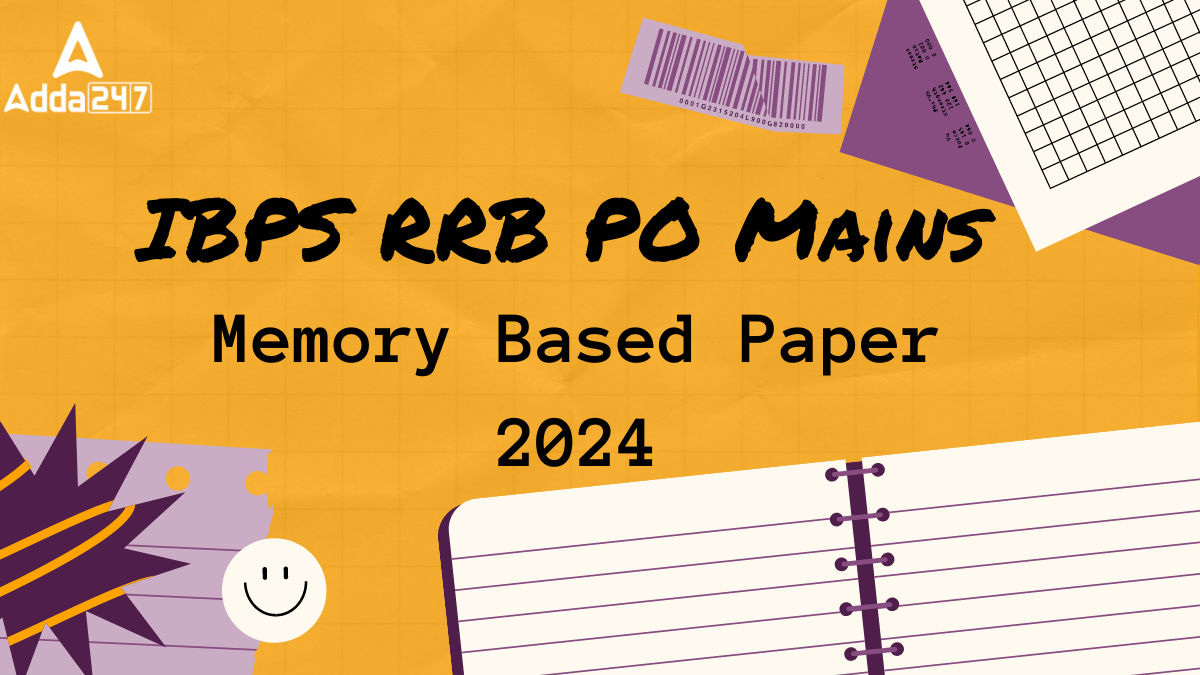
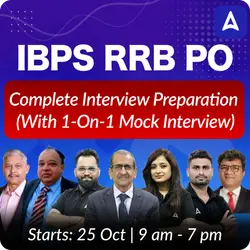








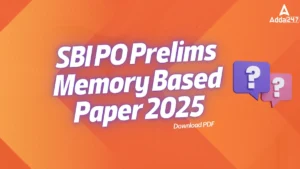 SBI PO Prelims Memory Based Paper 2025, ...
SBI PO Prelims Memory Based Paper 2025, ...
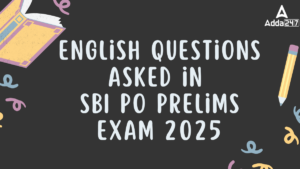 English Questions Asked in SBI PO Prelim...
English Questions Asked in SBI PO Prelim...
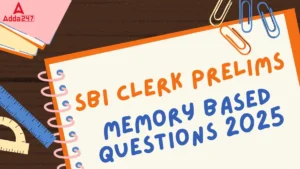 SBI Clerk Prelims Memory Based Questions...
SBI Clerk Prelims Memory Based Questions...





